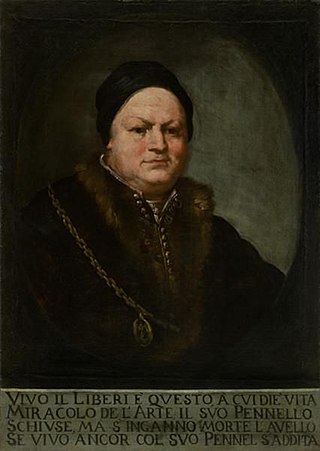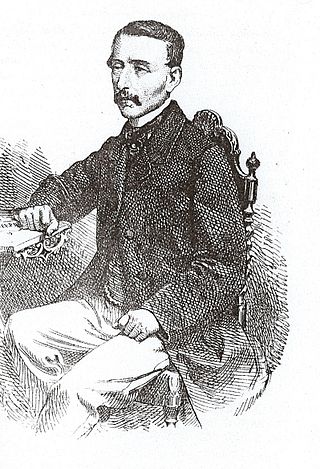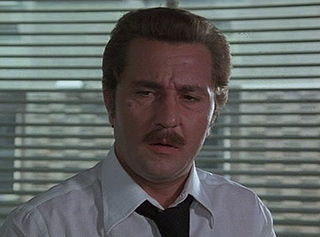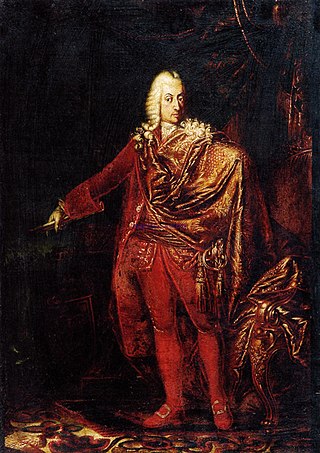
Vittorio Barzoni (17 December 1767 - 22 April 1843) was an Italian author, mainly of anti-Napoleonic tracts during the French occupation of Northern Italy.

Vittorio Barzoni (17 December 1767 - 22 April 1843) was an Italian author, mainly of anti-Napoleonic tracts during the French occupation of Northern Italy.
He was born in Lonato, province of Brescia, then in the Republic of Venice. His father was a mushroom merchant, and afforded Vittorio early education in his town, and later in a college of Verona, but finally at the University of Padua. Inspired by the new political ideas promulgated by the French Revolution, he moved to Venice and published his first work in 1794: Il solitario delle Alpi. Upon the fall of the Republic, he founded on 16 May 1797 a gazette titled L'Equatore. His writings were often sequestered or suppressed by the occupying French authorities. [1] He soon published a tract: Rapporto sullo stato attuale degli stati liberi d'Italia e sulla necessità che siano fusi in una sola Repubblica, in which he challenged the pretensions of Napoleon to be a liberator of Venice or Italy. By 27 September 1797, he was forced to flee the borders of Venice. With the Treaty of Campoformio ceding the Veneto to Austria, he returned to Venice, and soon published I Romani nella Grecia, which was a thinly veiled criticism of the French occupation as equivalent to the past Ancient Roman occupation and suppression of Greek freedoms. This book became available to both English and German readers. [2] [3] By 1801, he was forced to abandon Venice for Vienna, but soon also expelled from there by French pressure, and moved to Malta in 1804 where he published various anti-French journals ( L'Argo and Il Cartaginese ). He soon moved to liberated regions of Spain to continue his diatribes against the French occupation of that country. While initially inspired by the French Revolution, he was not entirely democratic, and aspired for the rule of monarchs and an aristocracy.
In 1814, he returned to Milan. He published in 1825, a dramatic tragedy Narina, but it soon faced censorship. He died in Naples.

The Doge's Palace is a palace built in Venetian Gothic style, and one of the main landmarks of the city of Venice in northern Italy. The palace was the residence of the Doge of Venice, the supreme authority of the former Republic of Venice. It was built in 1340 and extended and modified in the following centuries. It became a museum in 1923 and is one of the 11 museums run by the Fondazione Musei Civici di Venezia.

The Patriarchate of Venice, also sometimes called the Archdiocese of Venice, is a patriarchate of the Latin Church of the Catholic Church, located in the Metropolitan City of Venice. Its episcopal seat is in the Cathedral Basilica of St. Mark in Venice.

Giambattista Pittoni or Giovanni Battista Pittoni was a Venetian painter of the late Baroque or Rococo period. He was among the founders of the Academy of Fine Arts of Venice, of which in 1758 he became the second president, succeeding Tiepolo.

Pietro (Libertino) Liberi was an Italian painter of the Baroque era, active mainly in Venice and the Veneto.

Francesco Rosi was an Italian filmmaker, screenwriter and theatre director. His film The Mattei Affair won the Palme d'Or at the 1972 Cannes Film Festival. Rosi's films, especially those of the 1960s and 1970s, often appeared to have political messages. While the topics of his later films became less politically oriented and more angled toward literature, he continued to direct until 1997, his last film being the adaptation of Primo Levi's book, The Truce.

The Flags of Napoleonic Italy were the green, white and red tricolour flags and banners in use in Italy during the Napoleonic era, which lasted from 1796 to 1814. During this period, on 7 January 1797, the green, white and red tricolour was officially adopted for the first time as a national flag by a sovereign Italian state, the Cispadane Republic. This event is commemorated by the Tricolour Day.

Vittorio Umberto Antonio Maria Sgarbi is an Italian art critic, art historian, writer, politician, cultural commentator, and television personality. He is president of the Museum of Modern and Contemporary Art of Trento and Rovereto. Appointed curator of the Italian Pavilion at the 2011 Venice Biennale, Sgarbi is also a columnist for il Giornale and works as an art critic for Panorama and IO Donna. A popular ecletic and mediatic phenomenon, Sgarbi is well known for his glib, verbal aggressiveness, and insults, which often led to libels.

Francesco Azopardi was a Maltese composer and music theorist.

The Domini di Terraferma was the hinterland territories of the Republic of Venice beyond the Adriatic coast in Northeast Italy. They were one of the three subdivisions of the Republic's possessions, the other two being the original Dogado (Duchy) and the Stato da Màr.

Carlo Ilarione Petitti count of Roreto was an Italian economist, academic, writer, counsellor of state, and senator of the Kingdom of Sardinia. He is seen as a prominent figure in the Italian Risorgimento.

Giuseppe Caruso, best known as Pino Caruso, was an Italian actor, author and television personality.

The national colours of Italy are green, white, and red, collectively known in Italian as il Tricolore. The three Italian national colours appeared for the first time in Genoa on 21 August 1789 on the cockade of Italy shortly after the outbreak of the French Revolution, on 11 October 1796 they were used for the first time in Milan on a military banner, while on 7 January 1797 in Reggio Emilia they appeared for the first time on a flag.

The Republic of Venice was dissolved and dismembered by the French general Napoleon Bonaparte and the Habsburg Monarchy on 12 May 1797, ending approximately 1,100 years of its existence. It was the final action of Napoleon's Italian campaign of 1796-1797 before the War of the First Coalition formally ended in October.

The Provveditore Generale da Mar was the most senior peacetime office in the Venetian navy and in charge of governing the Venetian overseas empire.
In the judicial system of the Republic of Venice, that of the Esecutori contro la bestemmia was a magistracy, with competence in the city of Venice on crimes against religion and morality.

Carlo Aurelio Widmann was a Venetian patrician, naval officer, and the last Provveditore Generale da Mar of the Venetian overseas empire, from 1794 to the Fall of the Republic of Venice in 1797.
Cornelia Sale Mocenigo Codemo was an Italian poet and translator.

Giuseppe Zurlo, also called Giuseppe Zurolo, was an Italian jurist and politician, belonging to the Zurolo family.